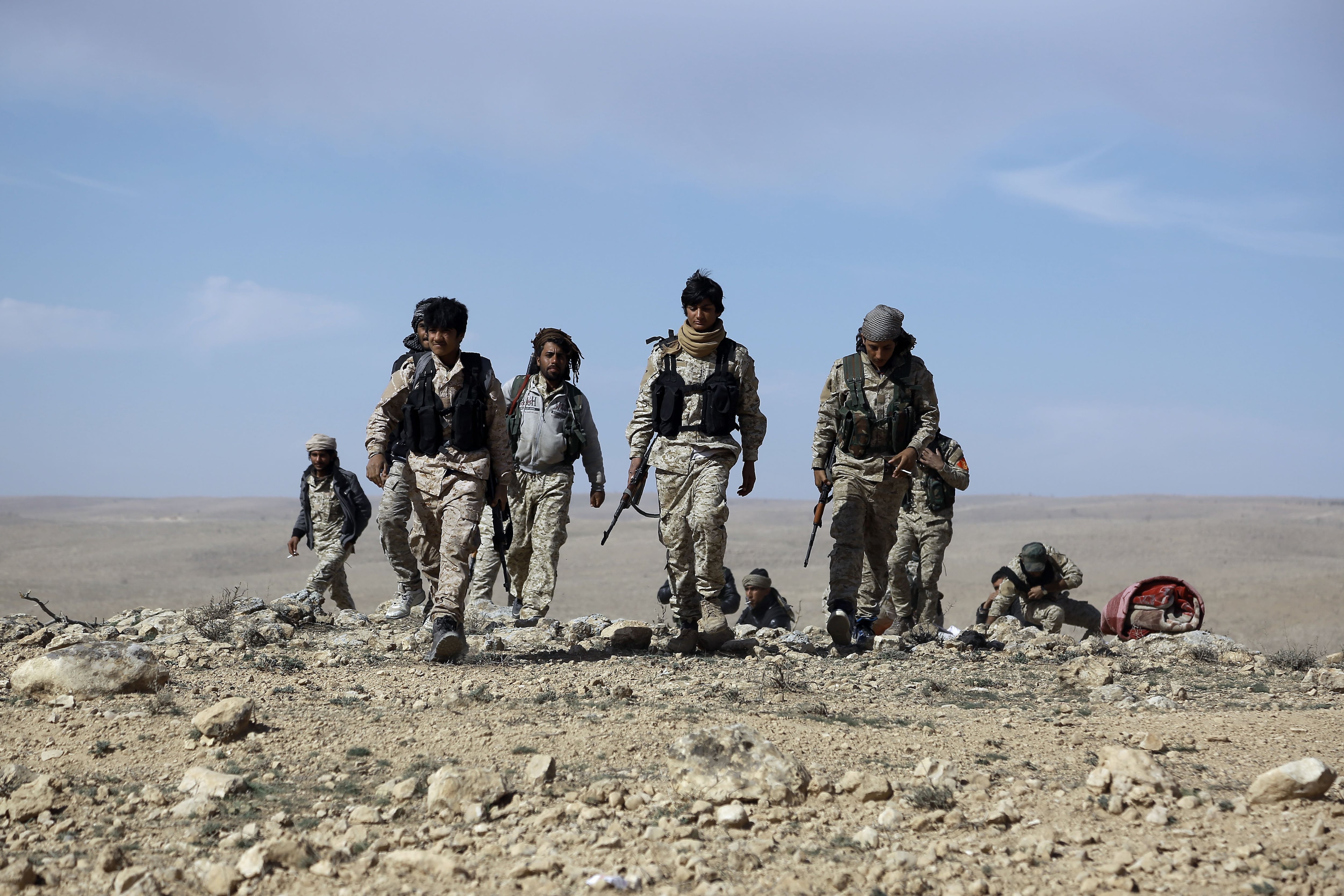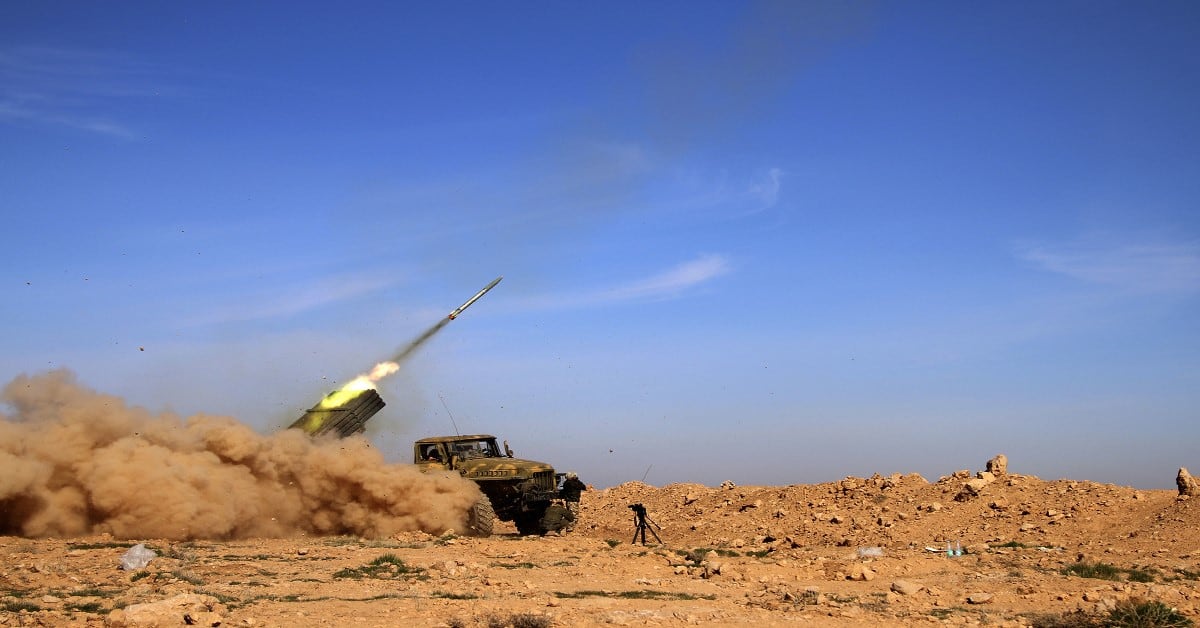As Kurdish fighters have departed the frontlines in the battle against the Islamic State, American airstrikes in eastern Syria have decreased sharply.
Strike reports from Combined Joint Task Force-Operation Inherent Resolve over the past two weeks show roughly a 50 percent decline from the number of strikes in January and February, and may provide more evidence of the “operational pause” that Col. Rob Manning, a Pentagon spokesman, said earlier this week is taking hold due to a separate Kurdish conflict with Turkey.
Coalition forces carried out 43 strikes in the two weeks ending Friday. That compares with 84 strikes in the two weeks before that.
The Kurdish fighters, who have spearheaded the U.S.-backed Syrian Democratic Forces, announced they would pull some units back from the fight against ISIS to focus instead on Turkish operations in the Kurdish-controlled enclave of Afrin, according to Kurdistan 24, a news outlet in the region.
“The departure of some SDF forces from the middle Euphrates River valley highlights the potential costs of any distraction from the defeat-Daesh fight,” Col. Thomas Veale, the Operation Inherent Resolve public affairs director, told Military Times.
But Veale did not draw a direct connection between the Kurds’ departure and the slowdown in kinetic air operations. He also noted that SDF units do remain in the region, to include around Deir Ezzor and Abu Kamal, where U.S. airstrikes have focused in past reports.
RELATED

“And they continue to exploit enemy weaknesses, supported by coalition precision strikes, as they contain and degrade Daesh,” Veale said, using the Arabic acronym for ISIS.
In response to a query from Military Times, CENTCOM officials emphasized that “the coalition has not ‘lost‘ the Syrian Democratic Forces. They are very much engaged in the defeat-Daesh fight in an increasingly complex operational environment."
Also contributing to the decline in airstrikes is simply a decline in targets.
“We would hesitate to associate a recent decline in strikes with any given factor, but we can confirm the reduction of coalition strikes over time,” according to the CENTCOM statement. “The reduction in coalition strikes is evidence of our success against Daesh over the past year."
The number of strikes has consistently gone down in the past seven months as ISIS fighters have been killed, captured or have fled.
- August ― 1,795 strikes
- September ― 1,566 strikes
- October ― 691 strikes
- November ― 275 strikes
- December ― 221 strikes
- January ― 289 strikes
- February ― 155 strikes
“We remain undeterred in pursuing our mission to defeat Daesh,” Veale said, “understanding the effort may take longer with the increased complexity of the situation in northern Syria, as well as our high standards for targeting against criminals who use human shields and hide among civilian populations.”
Marine Maj. Adrian Rankine-Galloway, another Pentagon public affairs official, reiterated to Military Times that the U.S. forces in Syria “have one mission, to defeat ISIS.”

“The coalition will achieve its goals, but the increased complexity of the situation in Syria can result in operations taking longer,” Rankine-Galloway said. “We will continue to support the SDF and local Syrian military and civil councils in liberated areas as long as they remain focused on the defeat-ISIS fight. Any military efforts outside those specifically focused on defeating ISIS do not, and will not, receive coalition support.”
At the same time, forces loyal to Syrian President Bashar al-Assad are once again massing east of the Euphrates River, near where U.S. troops are advising local forces, and where deadly airstrikes occurred last month to repel a battalion-sized regiment of pro-regime ground troops and armored vehicles, as first reported by CNN.
RELATED

"The coalition continues to observe potentially hostile forces east of the Euphrates River,” Veale said, in reference to CNN’s reporting.
“We continue deconfliction on this issue with Russian officials via the deconfliction (phone) line,” he added. “The coalition remains vigilant and is prepared to act on the well-defined and well-demonstrated right to self-defense in Syria's middle Euphrates River valley."
For the SDF units that remain in the region, Veale confirmed that the Inherent Resolve mission intends to continue providing support.
Kyle Rempfer was an editor and reporter who has covered combat operations, criminal cases, foreign military assistance and training accidents. Before entering journalism, Kyle served in U.S. Air Force Special Tactics and deployed in 2014 to Paktika Province, Afghanistan, and Baghdad, Iraq.




